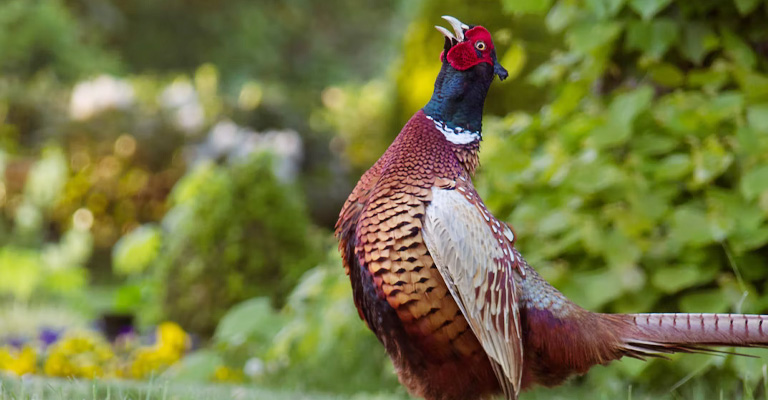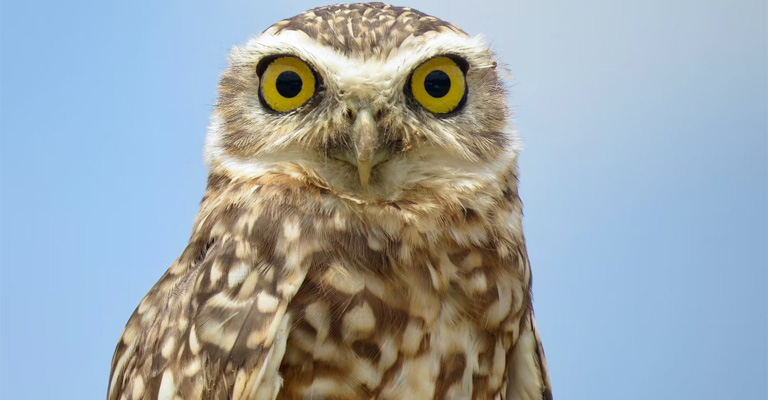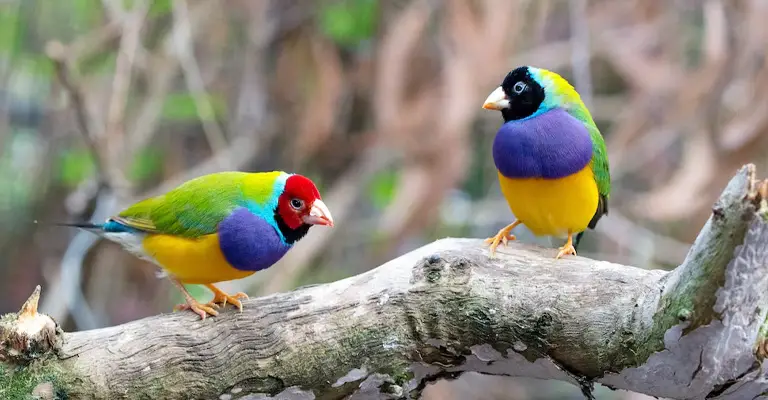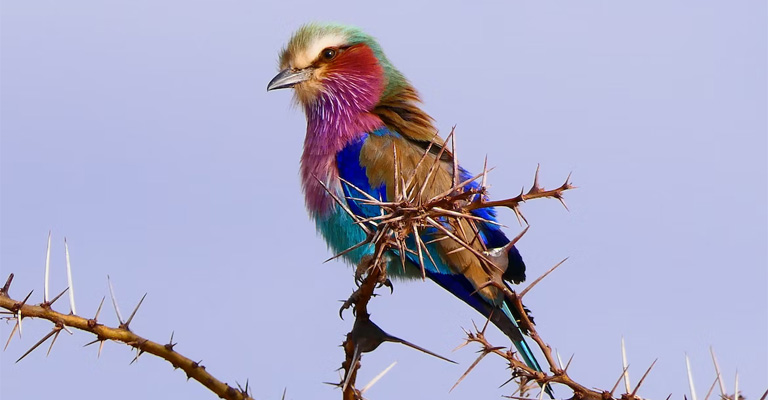Birds have long captivated the human imagination with their grace, beauty, and enchanting melodies. Beyond their ability to fly and diverse array of colors, one characteristic that consistently draws us closer to birds is their inherent cuteness.
Whether it’s the delicate chirping of a sparrow or the playful antics of a hummingbird, birds possess a unique charm that effortlessly melts our hearts. In this article, we delve into the reasons why are birds so cute and why they continue to capture our affection.

Why Are Birds So Cute?
Birds can be incredibly cute creatures, and there are several factors that contribute to their cuteness:
Unique Aesthetics
Birds come in an astonishing variety of shapes, sizes, and colors, which contribute to their innate adorableness. From the plump and round bodies of penguins to the tiny, fluffy chicks of songbirds, each species presents a distinct visual appeal.
Additionally, many birds exhibit endearing features such as large expressive eyes, fluffy feathers, and intricate patterns, all of which enhance their overall cuteness factor.
Playful Behaviors
Birds are renowned for their playful antics, which often leave us with a sense of joy and amusement. From acrobatic flights to hopscotch-like movements on the ground, birds engage in a wide range of behaviors that evoke a sense of innocence and playfulness.
Watching them engage in activities like splashing in puddles, grooming their feathers, or engaging in courtship displays is undeniably adorable and has a universal appeal.
Charming Vocalizations

Birdsong is one of nature’s most beautiful and captivating sounds, and it contributes significantly to the endearing nature of birds. The melodious trills, chirps, and warbles create an auditory delight that resonates with us.
The charming sounds of birds not only communicate vital messages but also evoke a sense of tranquility and contentment, which further enhances their overall cuteness.
Nurturing Parental Instincts
Observing the dedicated care that bird parents provide to their offspring is heartwarming. From building intricate nests to feeding and protecting their young, birds exemplify the epitome of nurturing instincts.
The sight of a parent bird tenderly feeding its chicks or shielding them from harm evokes feelings of tenderness and nurturance, ultimately reinforcing their cuteness in our eyes.
Curiosity and Intelligence
Birds are highly intelligent creatures with a curious nature. Their inquisitive behaviors, such as investigating new objects or mimicking sounds and human speech, contribute to their adorable appeal.
The way they tilt their heads inquisitively or cock their heads to the side while listening to human conversations can make anyone smile.
Their ability to problem-solve and learn also showcases their cleverness, adding another layer of charm.
Symbolism and Cultural Significance
Birds hold significant symbolic meaning across various cultures and societies. They are often associated with freedom, peace, and spirituality, which adds a deeper emotional connection to their cuteness.
Moreover, birds are frequently represented in art, literature, and popular culture, further strengthening their position as endearing creatures in our collective consciousness.
Big Eyes

Birds often have relatively large eyes in proportion to their body size. Big eyes are commonly associated with cuteness in various animals, and birds are no exception. Their expressive eyes can make them look innocent and captivating.
Colorful Plumage
Many bird species possess vibrant and beautiful plumage, which can enhance their cuteness. Bright and diverse colors, such as those found in parrots or hummingbirds, can create an appealing visual effect that draws people in.
Baby Birds
Like most baby animals, baby birds often exhibit characteristics that people find irresistibly cute. Their tiny bodies, large heads, fluffy feathers, and clumsy movements make them particularly adorable.
Evolutionary Reasons for Bird Cuteness

The evolutionary reasons behind the cuteness of birds can be attributed to a combination of factors that have developed over time through natural selection.
While the concept of cuteness may seem subjective, certain traits in birds have proven to be advantageous for their survival and reproductive success.
Here are some evolutionary reasons for bird cuteness:
Parent-Offspring Bonding
The cuteness of bird chicks plays a crucial role in fostering strong bonds between parents and offspring. Adorable features, such as big eyes, fluffy feathers, and helplessness, trigger nurturing behaviors in adult birds.
This ensures that parents invest time and energy in feeding, protecting, and raising their young, increasing the chances of offspring survival.
Attraction and Mate Selection
Some bird species exhibit elaborate courtship rituals and displays, where the cuteness of certain traits becomes essential for attracting mates.
Brightly colored plumage, intricate dances, or melodious songs are characteristics that enhance the attractiveness of individuals. This leads to successful pair bonding and the passing on of desirable traits to future generations.
Predator Deterrence
The appearance of cuteness in some bird species can serve as a survival strategy against potential predators. Baby birds with their innocent and vulnerable appearance may evoke parental instincts in other animals, making them less likely to be targeted as prey.
Mimicking the appearance of less harmful or toxic organisms through color patterns or behaviors can also provide protection against predators.
Species Recognition and Communication
Unique traits that contribute to bird cuteness, such as distinct patterns, colorful plumage, or specialized vocalizations, can aid in species recognition and communication.
By displaying visually or audibly appealing characteristics, birds can effectively communicate their species identity, establish social bonds, and coordinate behaviors within their own species.
Human Attraction and Conservation
The cuteness of birds has undoubtedly captivated human attention and affection. Humans often find the adorable nature of birds endearing, leading to increased interest in birdwatching, conservation efforts, and even domestication of certain bird species.
This human fascination with bird cuteness can indirectly contribute to their conservation by raising awareness and support for their protection.
It’s important to note that while cuteness in birds has evolutionary advantages, it is not the sole factor driving their survival and success. Various other traits, such as physical adaptations for flight, foraging efficiency, and ecological niche specialization, also play significant roles in their evolutionary history.
Nonetheless, the inherent cuteness of birds undeniably adds to their appeal, forging a unique bond between humans and these fascinating creatures.
Economic Impact of Bird Cuteness

The economic impact of bird cuteness may not be as straightforward as some other factors, but it can have several indirect effects on various industries and activities.
Here are a few ways in which bird cuteness can influence the economy:
Ecotourism and Birdwatching
Birdwatching and ecotourism are popular activities worldwide, and the cuteness of birds can significantly contribute to their appeal. Cute and charismatic bird species often become major attractions for tourists and birdwatchers.
People travel to specific regions or habitats to catch a glimpse of adorable birds, which can drive local economies through increased tourism, accommodation bookings, transportation services, and guided birdwatching tours.
Bird-related Merchandise and Souvenirs
The cuteness of birds, particularly iconic or well-loved species, can lead to the production and sale of various bird-related merchandise and souvenirs. This includes items such as stuffed animals, toys, t-shirts, mugs, keychains, and artwork featuring cute bird designs.
The demand for such products can create business opportunities for artists, designers, manufacturers, and retailers, contributing to local economies and the broader retail industry.
Avian Pet Industry
The attractiveness of certain bird species, often due to their cuteness, can drive the avian pet industry. People may be more inclined to keep birds as pets if they find them adorable.
This can create demand for pet birds, leading to the sale of bird cages, bird food, accessories, and related services. The avian pet industry encompasses breeders, pet stores, veterinarians, pet food manufacturers, and other businesses that cater to bird owners.
Wildlife Conservation and Research Funding
The cuteness of birds, especially endangered or threatened species, can generate public interest and support for conservation efforts. Cute birds may become “flagship” species, representing the broader biodiversity conservation cause.
As a result, conservation organizations and research institutions may receive increased funding for habitat restoration, conservation projects, scientific studies, and public awareness campaigns related to these adorable avian creatures.
Nature Photography and Art
Bird photographers and artists often focus on capturing the beauty and cuteness of birds in their work. Stunning photographs, paintings, and illustrations of cute birds can be sold as prints, calendars, greeting cards, and licensed artwork.
This contributes to the creative industry and provides income opportunities for photographers, artists, and artisans.
While the economic impact of bird cuteness may not be as substantial or direct as some other factors, the appeal of adorable birds can influence various sectors of the economy, from tourism and merchandise sales to wildlife conservation and creative industries.
Ultimately, the cuteness of birds can inspire economic activities that revolve around appreciation, enjoyment, and preservation of these delightful creatures.
FAQs
Birds rely heavily on their vision for various activities such as hunting for prey, finding mates, and navigating their environment. Large, expressive eyes provide birds with a wide field of view, allowing them to detect predators or potential threats quickly. These eyes also help birds communicate and express emotions through their facial expressions.
Birds produce songs using a specialized vocal organ called the syrinx, located at the base of their trachea. The syrinx allows birds to generate a wide range of sounds and control the pitch, volume, and duration of their songs. Bird songs serve various purposes, including attracting mates, defending territory, and communicating with other birds.
Birds exhibit a remarkable range of intelligence. While their cognitive abilities may differ from those of mammals, numerous bird species have demonstrated problem-solving skills, tool use, complex social behaviors, and the ability to recognize themselves in mirrors. Some bird species, such as crows and parrots, are known for their exceptional intelligence and problem-solving abilities.
Building intricate nests serves several purposes for birds. Nests provide a safe and secure environment for incubating eggs and raising offspring. The complexity of the nests can deter predators and provide insulation, maintaining a suitable temperature for eggs or young chicks. Additionally, elaborate nests may also play a role in attracting a mate, as they demonstrate the builder’s skill and dedication.
Birds that mimic human speech, such as certain species of parrots and mynas, have a unique vocal anatomy that allows them to imitate sounds they hear. They possess a highly developed syrinx and vocal muscles, giving them fine control over their vocalizations. These birds learn to mimic human speech by closely observing and imitating the sounds they hear in their environment. Training and social interaction with humans can further enhance their ability to mimic speech.
Bottom Line
That was all about why are birds so cute. The undeniable cuteness of birds stems from a combination of their unique aesthetics, playful behaviors, enchanting vocalizations, nurturing instincts, intelligence, and cultural significance.
These characteristics evoke a range of emotions within us, from delight to tenderness, and create a strong bond between humans and these feathered creatures.
Whether they are soaring through the sky or perched on a branch, birds continue to capture our hearts with their irresistible charm, reminding us of the beauty and magic that exists in the natural world.